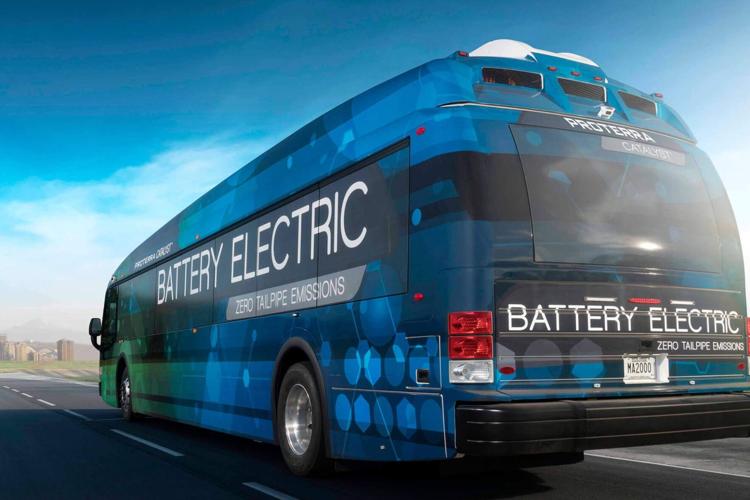Aggie Spirit Bus goes green
The Battalion
By Nathan Varnell
Published: July 15, 2021

Texas A&M students will be able to take advantage of the brand-new fleet of electric busses on July 12.
Three all-electric buses have joined the Aggie Spirit Bus fleet this summer— and students began riding on the new buses July 12.
This summer, Texas A&M’s Department of Transportation Services has begun a pilot program to compare new electric buses to the diesel buses which make up the majority of the fleet,
Transit Manager Justin Tippy said. Whether or not more electric models are added to the fleet in the future,
the original three will be the first electric buses in any university-run transit system in Texas, Tippy said.
To determine if the electric models perform better than diesel, student drivers began training on Route 6, the “12th Man” bus.
“The first thing you notice before you even start driving is it's silent,” Blinn welding senior and student driver Ian Archibald said.
Drivers will hear a lot of things they’re not used to without the noise of a diesel engine, Archibald said.
They will need to be familiar with the sounds of power steering, air brakes and noise from the suspension to know what’s normal.
“Training on an electric bus is completely different from start to finish,” kinesiology senior and student driver Vanessa Hernandez said.
Electric buses take much less time to brake than diesel buses, Hernandez said, which may take time to get used to for drivers.
“Training for electric buses was a bit nerve-wracking at first because of the learning curve of how different certain things were compared to the diesel buses,”
masters in mental health counseling student driver Katherine Garcia said. “But after being trained within 15 minutes or so I was able to get the hang of it.”
A new feature called regenerative braking opens a completely new challenge for drivers.
“As soon as you let off the throttle once you're moving, the wheels turn into generators, putting energy back into the batteries and slowing you down,” Archibald said.
“If drivers learn how to use this feature properly, they could drive without ever applying their brake pedal.”
Regenerative braking is one of the many aspects of electric motors that make them much more efficient than diesel or gasoline powered vehicles, Archibald said.
However, comparing the performance between diesel and electric buses has only just begun for Transportation Services.
“Bus occupancy and weather, which can require air conditioning and heating, affect the bus performance,” Tippy said.
“The true test will come this fall when campus returns to almost normal conditions and bus occupancy will be at its peak.”
On a regular fall service day, Tippy said the bus fleet uses 2,500 gallons of diesel fuel. Until it can be determined how much fuel these electric buses will replace,
Transportation Services already offers other modes of sustainable transport.
Most students are aware of the Veo bike share service, but the department also offers rideshare and car share, through Zipcar.
“We are developing a mobility master plan to help create a connected mobility ecosystem, where all modes of transportation are integrated into a seamless experience,” Tippy said.
“And we want input, students can join the conversation and help make an impact on campus at agsonthemove.com.”
Read the full article